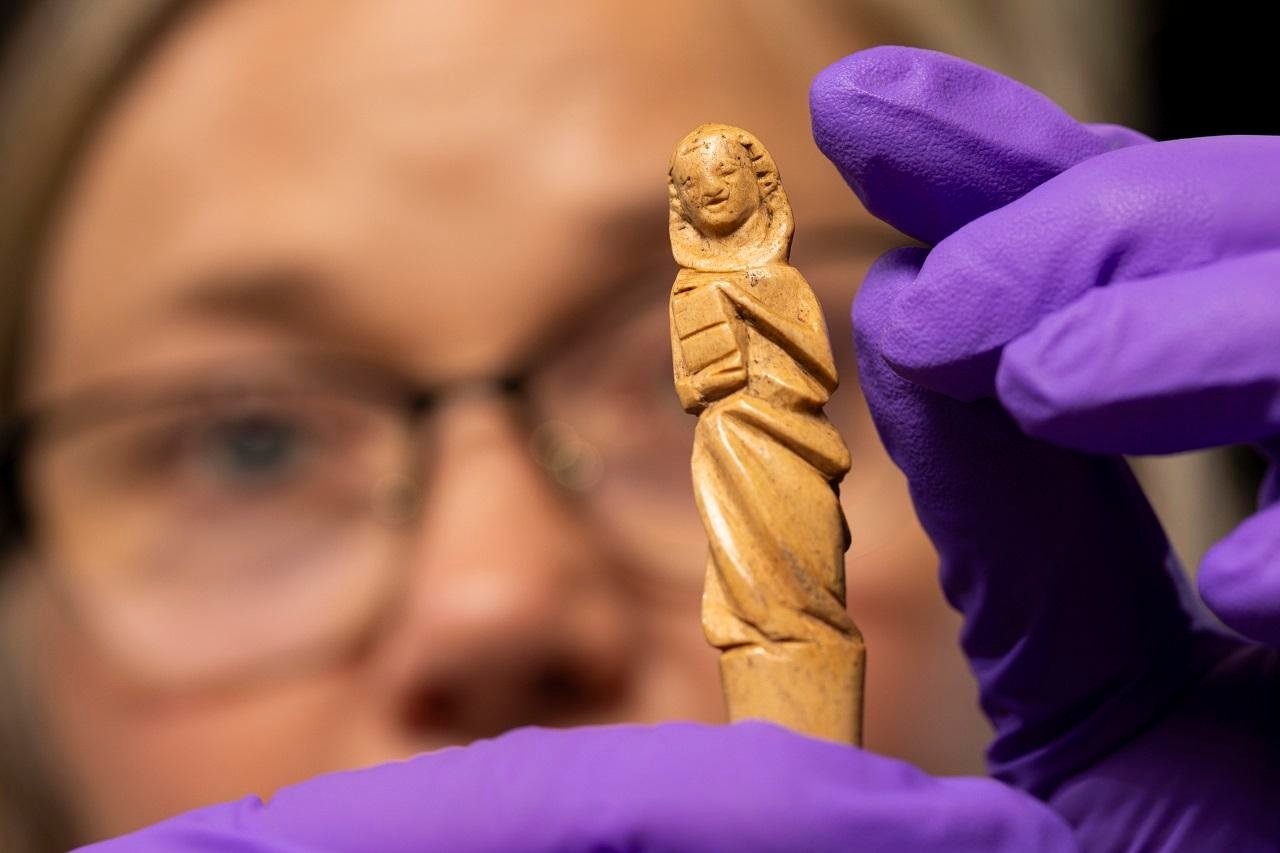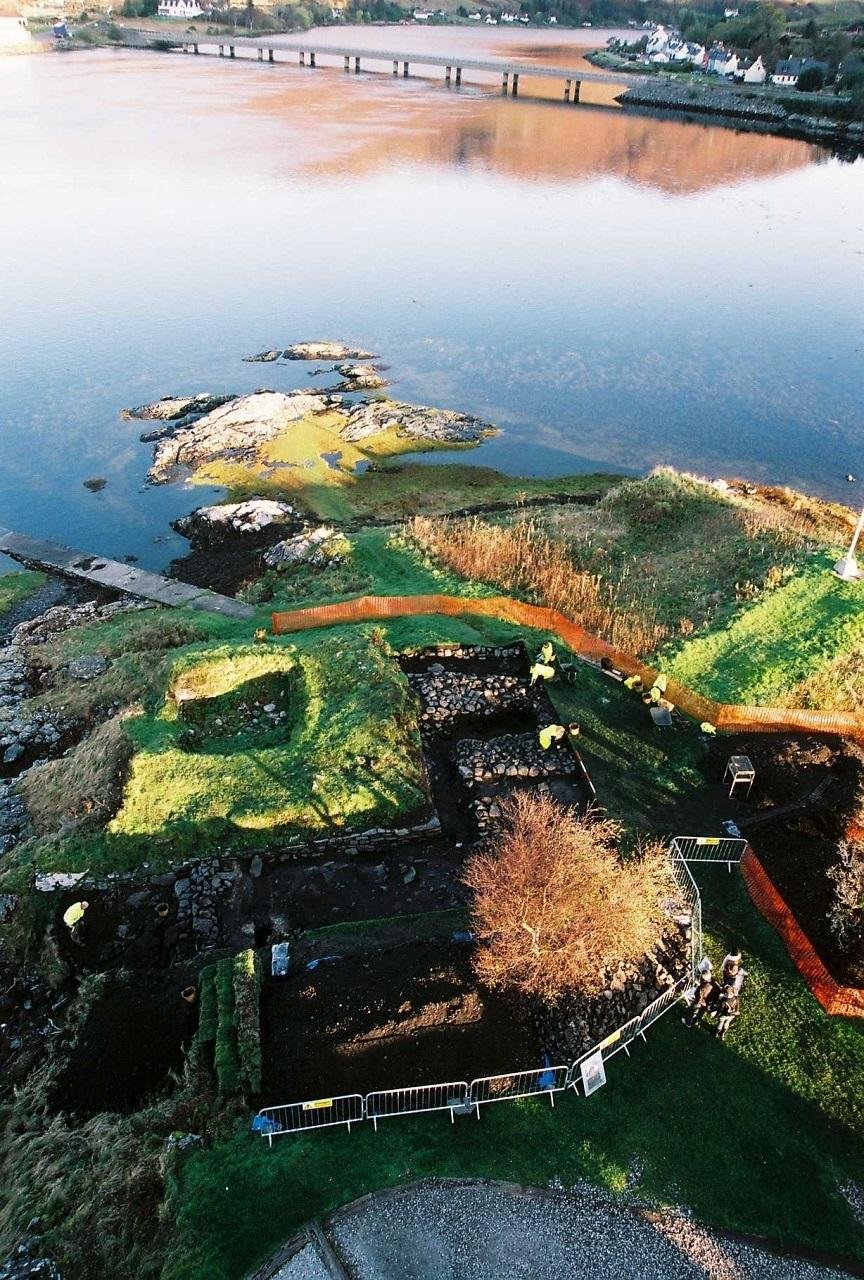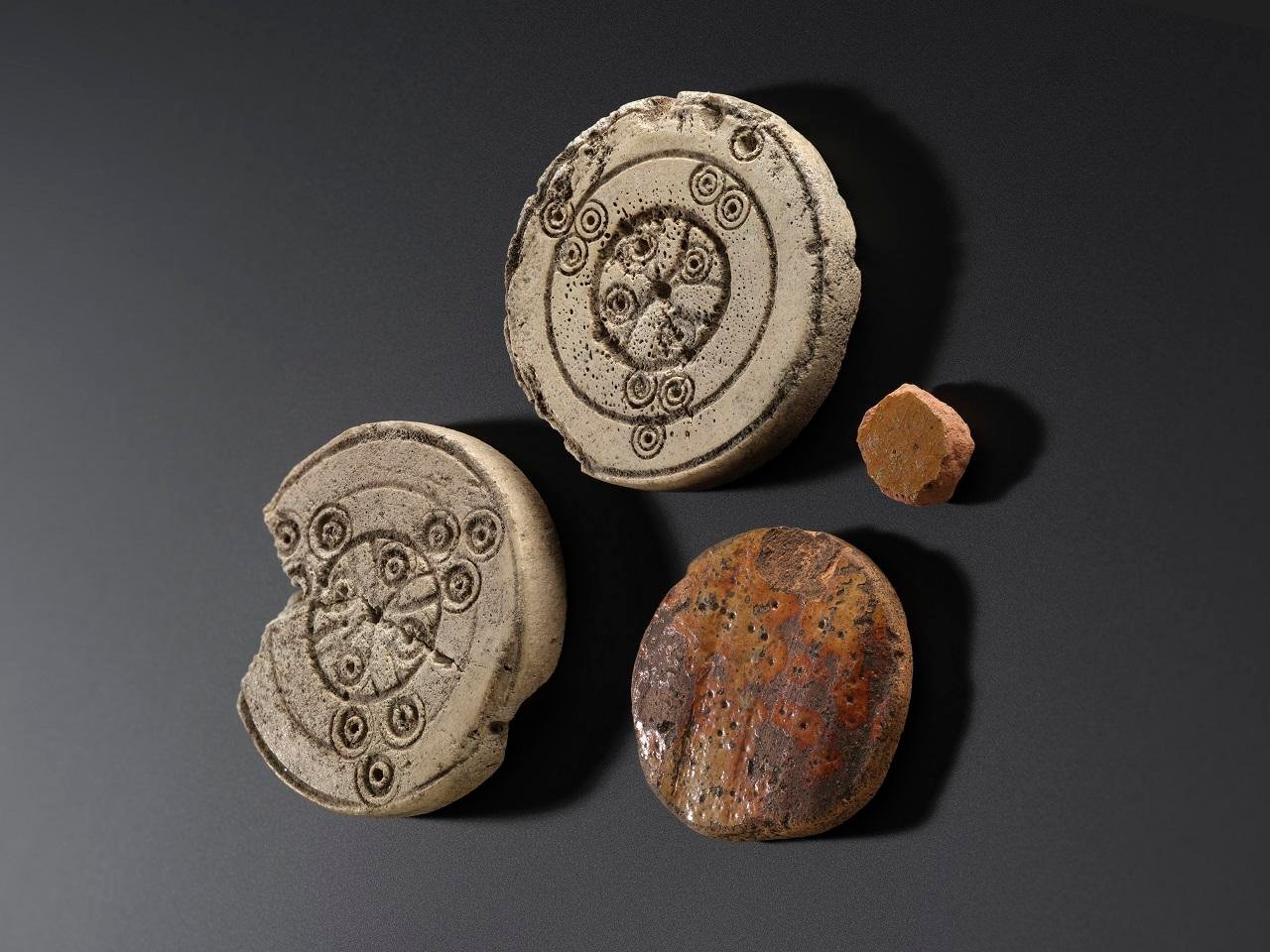A rare 13th-century hair-styling implement has been unearthed at Eilean Donan Castle in the Scottish Highlands and is housed in the National Museums Scotland collection. The object, known as a gravoir, is the first of its kind ever found in Scotland and one of just three known in the whole of the United Kingdom.
 Dr Alice Blackwell with the gravoir. Credit: Duncan McGlynn
Dr Alice Blackwell with the gravoir. Credit: Duncan McGlynn
It was revealed during excavations led by FAS Heritage, which were commissioned to shed light on medieval life at one of Scotland’s best-known castles. Perched where three sea lochs meet at the gateway to Skye, Eilean Donan is a world-renowned symbol of Scotland and has featured in films such as Highlander and The World Is Not Enough. Despite its status, little was known about the role of the castle during the 13th and 14th centuries until these investigations were initiated.
The gravoir, crafted from local red deer antler, contrasts with better-known ivory types found throughout Europe. The piece is decorated with an incised representation of a figure wearing a hood and holding a book, reflecting continental fashions in personal grooming, where elite men and women styled hair into intricate arrangements. Such an artifact suggests that the occupants of the castle were not simply engaged in politics and conflict but were also active in broader cultural trends that connected the Highlands with the rest of Europe.
 Eilean Donan Castle NW Tower excavation. Credit: FAS Heritage
Eilean Donan Castle NW Tower excavation. Credit: FAS Heritage
The tool is among hundreds of artifacts from the medieval heyday of the castle that are currently housed in approximately 80 boxes at the National Museums Collection Centre in Edinburgh. The ᴀssemblage illustrates daily life within the fortress. Finds include brooches, dress pins, crucibles containing traces of gold and silver, and other metalwork objects that demonstrate how anything from buckles to swords could have been produced on-site. Collectively, they form one of Britain’s most significant collections of medieval metalworking.
 Gaming pieces. Credit: National Museums Scotland
Gaming pieces. Credit: National Museums Scotland
Other than ornament and craftsmanship, the collection also presents the social and recreational life of the castle. Game pieces carved from bone, pottery fragments, an iron jaw harp, and “buzz bones”—animal bones with holes drilled into them and spun to create sound—reveal adults and children engaged in play and entertainment. The finds allow historians to look at the lives of people across the social spectrum, from the smiths at the forge to the children playing with simple toys.
Eilean Donan itself has a dramatic history. It was once a fortress of Highland Gaelic lordship, but after the 15th century, it lost significance. In the early 18th century, it had fallen into ruin and was abandoned, and it was later destroyed in the Jacobite uprisings of 1719. The castle remained derelict until the early 20th century, when it was reconstructed to form the picturesque monument that attracts thousands of visitors every year.
The newly acquired collection ensures that Eilean Donan is not merely remembered as a romantic ruin or tourist attraction but as a thriving medieval community. The gravoir itself, however, demonstrates how its inhabitants were influenced by European trends while adapting them with local materials.
More information: National Museums Scotland





